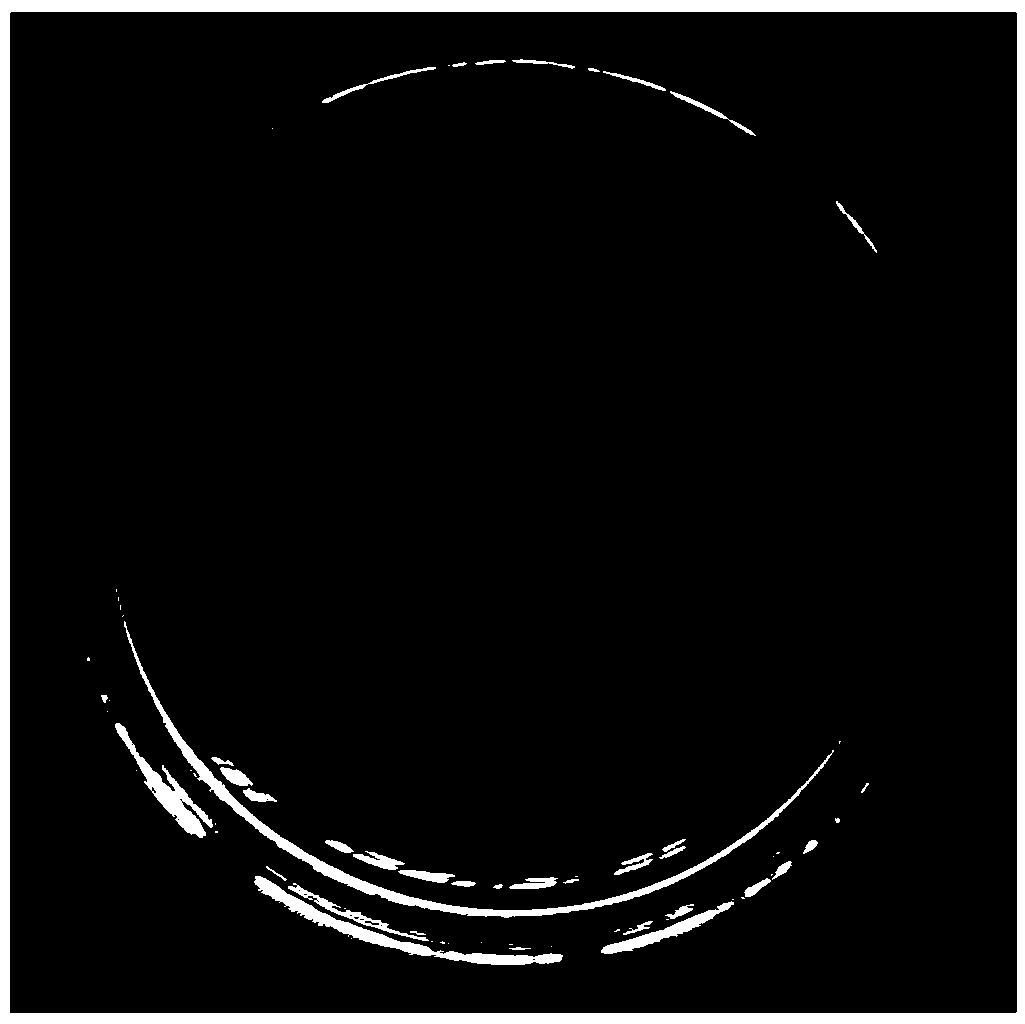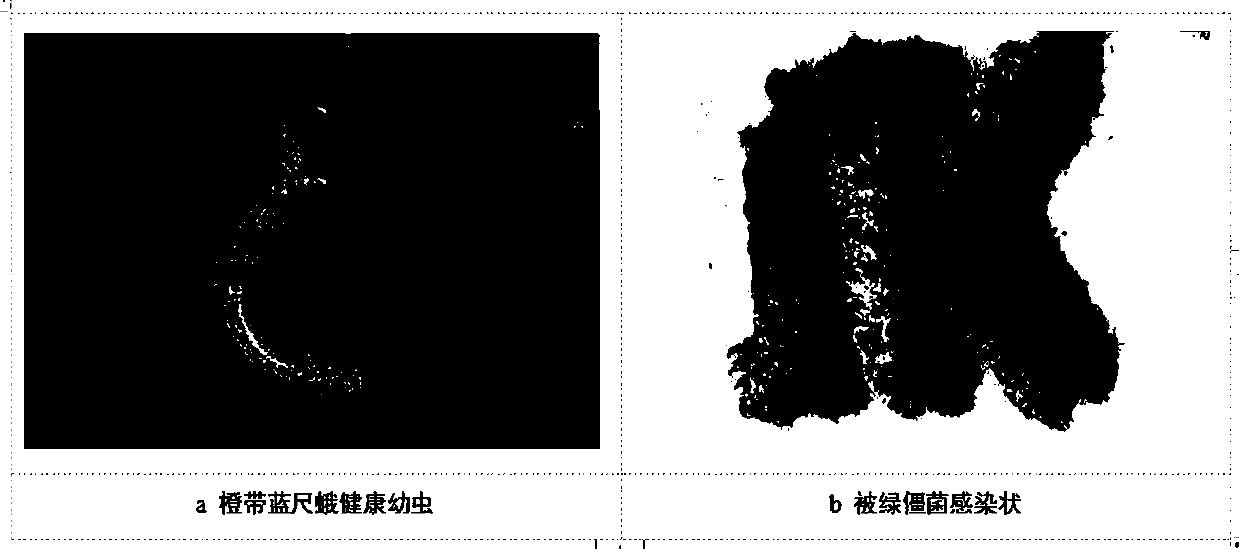Metarhizium anisopliae strain with high pathogenicity to larvae of Milionia basalis and application of Metarhizium anisopliae strain
A technology for Metarhizium anisopliae, orange-banded blue-foot moth, applied in the application, pesticides, fungi and other directions, to achieve the effect of reducing the amount of use, strong spore-producing ability, and significant control effect
- Summary
- Abstract
- Description
- Claims
- Application Information
AI Technical Summary
Problems solved by technology
Method used
Image
Examples
Embodiment 1
[0030] Embodiment 1 scarab metarhizium anisopliae ( Metarhizium anisopliae ) Identification of FJMa201516
[0031] Morphological identification:
[0032] The isolated and purified Metarhizium anisopliae FJMa201516 strain was cultured on a flat PPDA medium with a diameter of 90 mm at 25±1°C, and after 4 to 5 days, the white mycelium was picked up to observe the mycelium and distribution of the strain under a microscope. Morphology of sporozoites; after 8-10 days, mature conidia were picked to make slices, and the shape and size of the conidia were observed under a microscope. Observe and record the morphological characteristics of the colony for about 15 days. The colony of this strain is white at the beginning, and the texture is cotton-wool. After 4 to 5 days, dark green conidia are produced on the colony and distributed in a ring. Mycelia branched, latticed, colorless and smooth, 2.2μm~3.3μm wide, conidiophores solitary or branched, with 2~5 columnar sporulation cells at...
Embodiment 2
[0041] Embodiment 2 scarab metarhizium anisopliae ( Metarhizium anisopliae ) Biological properties of FJMa201516
[0042] Metarhizium anisopliae ( Metarhizium anisopliae ) FJMa201516 was inoculated in the center of PPDA plate medium, cultured in an incubator at 25±1°C, and the colony diameter was measured once a day by the cross method, and 3 plates (repeated) were set up for each treatment, and observed for 15 days in total. At the same time, record the start time of sporulation. On the 15th day (sporulation is basically over), use a puncher with a diameter of 1.5 cm to punch a small plate from the center of the colony to 1 / 2 of the edge, take out the plate and place it in a 30 mL container In a triangular flask with 0.3‰ Tween-80 sterile water, oscillate to fully disperse the spores and dilute them appropriately. Measure the spore concentration with a hemocytometer and convert it into the sporulation per unit area. The determination was repeated three times on each plate...
Embodiment 3
[0047] Metarhizium anisopliae ( Metarhizium anisopliae ) Determination of the pathogenicity of FJMa201516 to the larvae of the blue-footed moth
[0048] Collection and rearing of test insects:
[0049] The test insect was the larvae of the orange-banded blue-footed moth. It was collected on May 12, 2019 at the Podocarpus nursery in Youxi County, which was seriously damaged by the orange-banded blue-footed moth. After the larvae were collected, they were brought back to the laboratory, placed in insect cages, and fed with fresh Podocarpus pine leaves. After 1 day, the selection activities were normal, and the 3rd to 4th instar larvae were placed in insect feeding boxes, 15 insects were placed in each feeding box, for the determination of the pathogenicity of Metarhizium anisopliae.
[0050] Pathogenicity determination and analysis
[0051] Scrape a certain amount of Metarhizium anisopliae from the PPDA plate ( Metarhizium anisopliae ) FJMa201516 spores were placed in ster...
PUM
 Login to View More
Login to View More Abstract
Description
Claims
Application Information
 Login to View More
Login to View More - R&D
- Intellectual Property
- Life Sciences
- Materials
- Tech Scout
- Unparalleled Data Quality
- Higher Quality Content
- 60% Fewer Hallucinations
Browse by: Latest US Patents, China's latest patents, Technical Efficacy Thesaurus, Application Domain, Technology Topic, Popular Technical Reports.
© 2025 PatSnap. All rights reserved.Legal|Privacy policy|Modern Slavery Act Transparency Statement|Sitemap|About US| Contact US: help@patsnap.com



